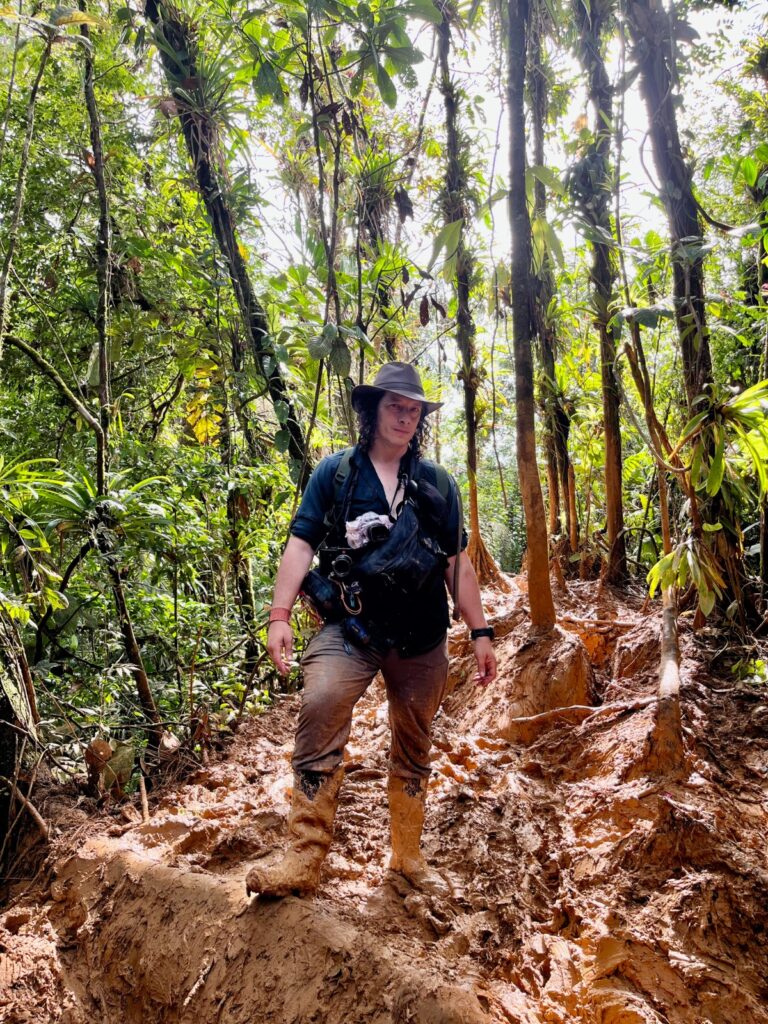Colombian photojournalist Federico Ríos, a finalist for the Luis Valtueña Humanitarian Photography Prize for his work on migrants crossing the dangerous Darién Gap, a rugged jungle between South and Central America, is pained by the way the world has decided to look the other way and ignore migration.
Society should “slap itself in the face a little and start looking for ways to help, because we cannot as humanity reach such brutal levels of indifference,” the photojournalist, a contributor to The New York Times and other international publications, stresses in a conversation with Doctors of the World.
Convinced that photography shows what is happening at the same time as it becomes a notarial record for history, the project to document the harsh conditions of those who cross the jungle of the Darien Gap did not start from scratch, Ríos has been portraying Venezuelan migration and, in general, other migrations for more than ten years.
Federico Ríos’ images reflect very dramatic scenes, each photo is a human story. Among them is one of a pregnant woman who fell down a hill and may have lost her baby as a result.
Despite the idyllic image we may have of the jungle, “very beautiful in photos”, the photojournalist assures us that it is “a dangerous scenario”, especially when the people who are crossing it “are not prepared for it, they are not trained”.
The photographer cites other dangers when crossing this intricate road, a deadly ambush for thousands of people.
He points to the existence of “illegal groups that are taking people back and forth, charging money”. Many times they are “organised groups” and other times they are “local indigenous people” who “charge exorbitant amounts” to those who decide to cross the Darién Gap for the passage of these people through their territory.
He adds that in addition to these groups, there are also “assaults, robberies, rapes, murders, beatings and many other dangers”, not to mention those inherent to the jungle, such as animals, rain, flooding rivers and trees with thorns.
Added to this is the weight on the migrants’ backs as they make their way through the jungle. As the days go by, they decide to leave things behind when they can no longer carry them and so “they start to run out of food and water, which becomes a great risk, because without food and water you have no energy and the chances of dying in the middle of the jungle are once again very high”.
The country of origin of the people who decide to cross the Darién Gap has varied greatly in recent years, explains the photojournalist, who has won prestigious international awards such as the Hansel-Mieth Preiss Award in 2019.
“Five years ago, most of the migrants were Cubans who came to Latin America and then used the Darién plug.
In 2021, after the death of the Haitian president, many Haitians living in Latin America especially in Brazil decided to cross the jungle and at that time the maximum peak of migrants using the Darien Plug were Haitians.” It was the first time the photographer travelled to the jungle to return in 2022 when at the end of that year most of the migrants crossing were Venezuelans.
However, at the moment, the photographer stresses, Ecuadorians make up “the largest peak of migrants”, although there are people from at least 37 countries crossing the jungle, Ríos points out.
In his opinion, “neither in Venezuela, nor in Colombia, nor in Panama, nor in the United States (the country to which most of the migrants are heading) are there policies to protect or help these people, but on the contrary policies that put their lives at risk”.
“Migrating by risking one’s life through the Darien Gap should not be an option because the risks involved in this situation are too high and because the number of people who have died crossing the jungle is also high; no one should be forced into such a dramatic situation”, he reflects.
For this reason, he recalls that there are many professionals at the moment who are photographing migration “and – he points out – what we are doing is joining a chorus of voices asking humanity not to forget and not to ignore this situation”.
Aware that the Darien Gap is not the only migratory passage that involves deaths, the Mediterranean itself is also a great mass grave of migrants who lost their lives while trying to achieve better living conditions, he concludes that it is very important to raise awareness about what is happening with migration around the world.
Mercedes Bermejo




